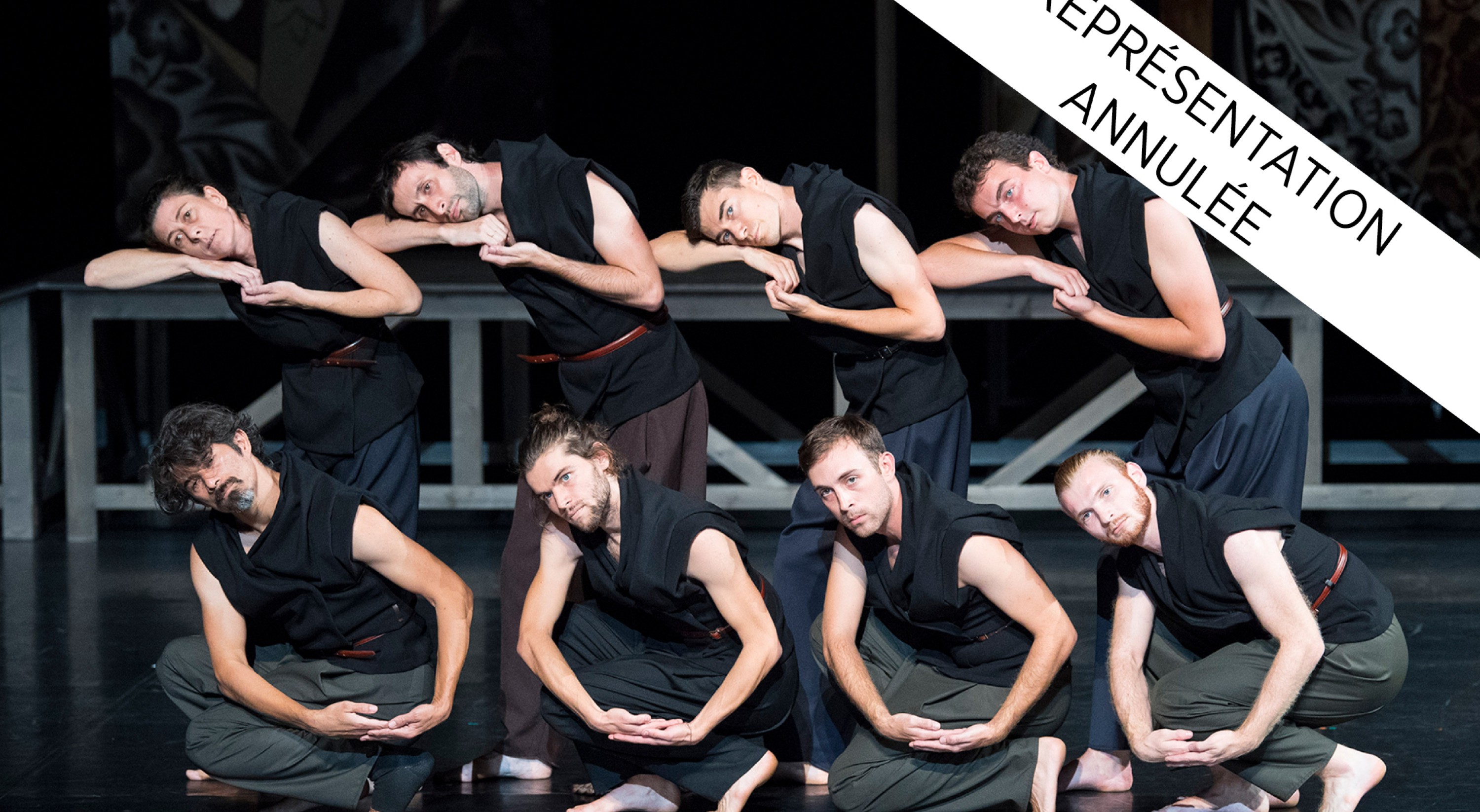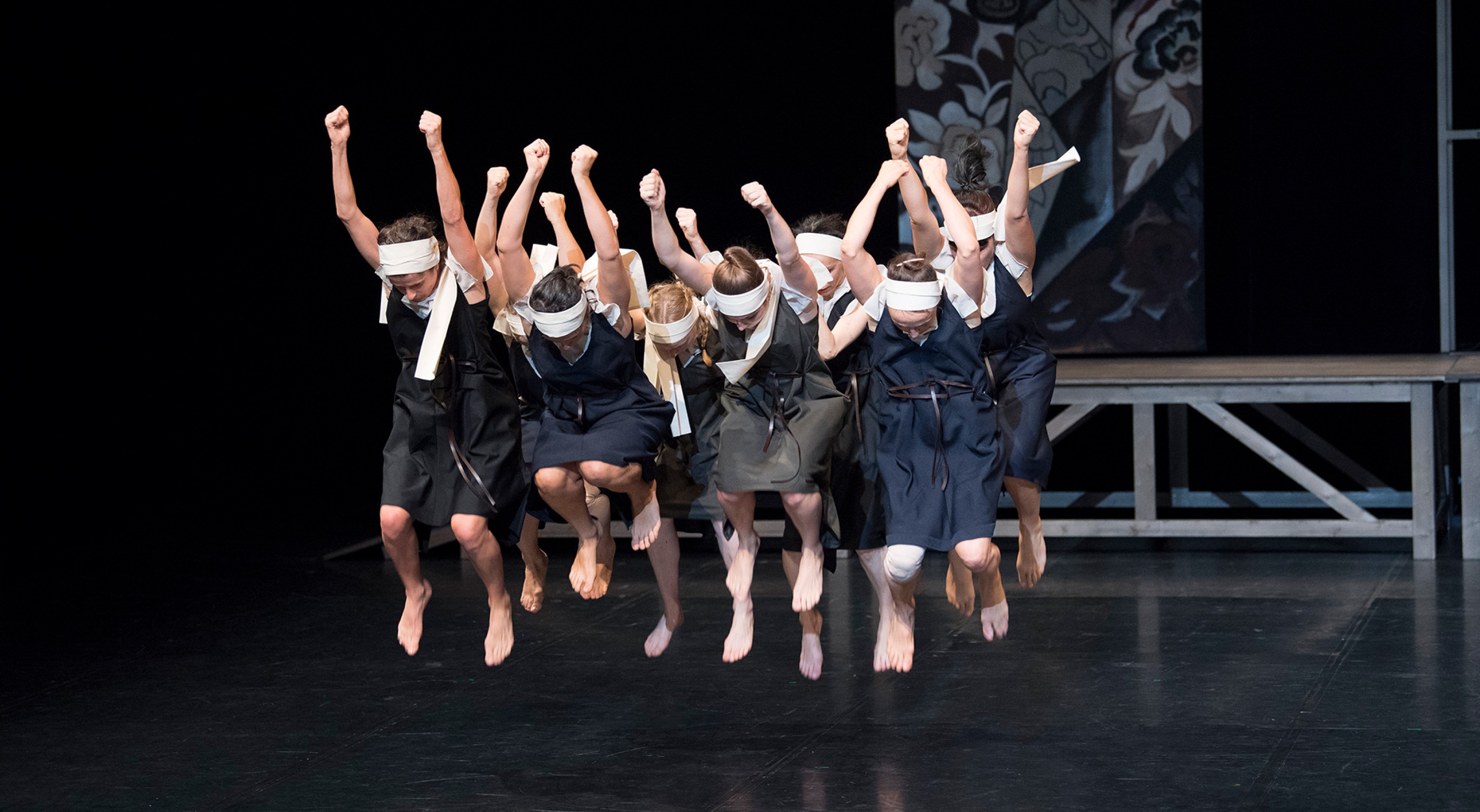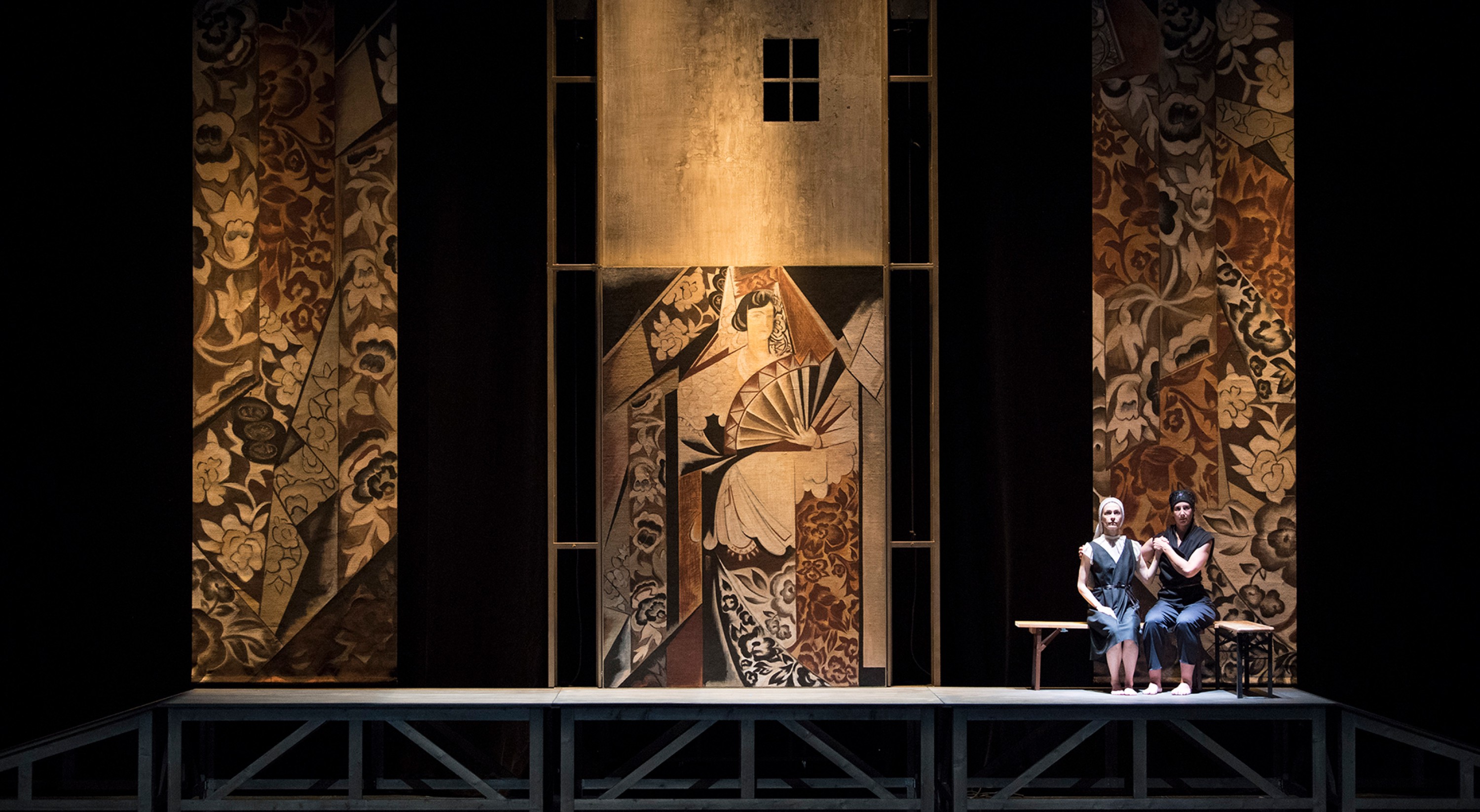Dominique Brun
Nijinska | Voilà la femme
decemberdec 12
Les Noces
Choreography, Bronislava Nijinska
Choreographic dramaturgy, Dominique Brun
With Roméo Agid, Caroline Baudouin, Marine Beelen, Zoé Bleher, Garance Bréhaudat, Florent Brun, Joao Fernando Cabral, Lou Cantor, Clarisse Chanel, Gaspard Charon, Zoé De Sousa, Massimo Fusco, Judith Gars, Maxime Guillon Roi Sans Sac, Sophie Jacotot, Anne Laurent, Clément Lecigne, Marie Orts, Enzo Pauchet, Laurie Peschier-Pimont, Maud Pizon, Mathilde Rance, Julie Salgues, Lina Schlageter, Lucas Real
Music, Igor Stravinsky, Les Noces, based on the score from 1919, recorded music
Un Bolero
Choreography, Dominique Brun and François Chaignaud
With Massimo Fusco
Music, Maurice Ravel, Bolero, transcription for choir and small ensemble by Robin Melchior, recorded music
Costumes, Marie Labarelle (Les Noces) and Romain Brau (Un Bolero)
Scenography, Odile Blanchard (Atelier Devineau)
Lighting, Philippe Gladieux
Sound, Éric Aureau
Coproduced by Le Volcan, scène nationale du Havre ; Chaillot – Théâtre national de la Danse (Paris) ; Les 2 Scènes, Scène nationale de Besançon ; Théâtre du Beauvaisis, Scène Nationale ; Le Quartz – scène nationale de Brest ; Théâtre Louis Aragon, scène conventionnée d’intérêt national Art et création – danse de Tremblay-en-France ; La Ménagerie de Verre (Paris) ; CCN – Ballet de Lorraine (Nancy) ; La Briqueterie – CDCN du Val-de-Marne (Vitry-sur-Seine) ; Le Grand R, Scène nationale de La Roche-sur-Yon ; and association du 48
With support from Adami
Dominique Brun pays hommage to Bronislava Nijinska, whose work, despite being the first and only choreographer of the Ballets Russes, has been all too often overlooked. By means of an in-depth reading of her archives, she restages, in complicity with her dancers, Les Noces and reinvents Le Boléro. The aim is to turn the spotlight on her legacy - even to the extent of slightly fantasising about it.
Pursuing her research into the prominent figures of modernity, in particular Vaslav Nijinski, Dominique Brun turns her attentions to his sister, "our Nijinska", another cornerstone of the Ballets Russes. After meticulously going through her archive material (drawings, notes, notebooks, and scores, for example), she retraces the thread of a form of choreographic writing that stood apart from the different eras it was situated in, and which set out to bring them back to life by bringing their sedimentary memories into contact with each other. From the reactivation of these archives to their performance in the present, the programme's restaging of two iconic pieces pays homage to an Avant-garde choreographer who was influenced by the constructivism and modernism of her brother. Les Noces, restaged using most of the cast from Sacre #2 privileges the movement of the group and anchorage to the ground. Its choreography, ritualistic and grounded in equal measure, draws upon the energy of the Russian peasant dances. The piece is accompanied by an instrumental and vocal recording of Ravel's first version, written in 1919. In Boléro, originally choreographed by Nijinska, set to the music of Ravel and commissioned by Ida Rubenstein, a soloist makes a spectacle of himself in front of a group of twenty transfixed men. With her invitation to François Chaignaud to perform it and to share in its choreographic writing, Dominique Brun confronts the bolero form with that of other typical Spanish dances, skirt dances and Tatsumi Hijikata's "revolt of the flesh" Butoh dance. Dressed in a long robe, the dancer alternates between spinning, staccato with the feet, and slow arm and upper-body movements, his body entering into resistance with the martiality of the rhythm in order to undermine the authority of the music.
See also


